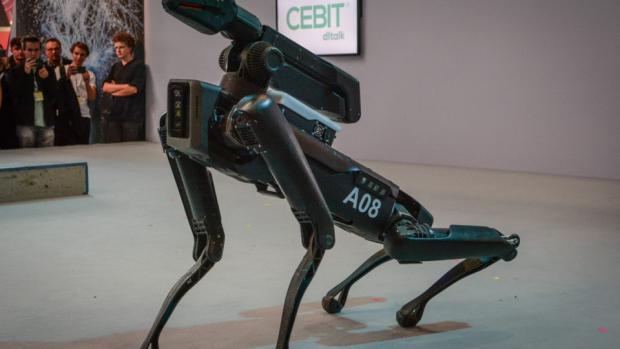
Breaking News
 FULL SPEECH: Tucker on the America First Movement & New "Deplatforming" Agenda
FULL SPEECH: Tucker on the America First Movement & New "Deplatforming" Agenda
 Red Light Therapy And Men's Health: Does It Really Work?
Red Light Therapy And Men's Health: Does It Really Work?
 Kash Patel's New FBI Clown Show - The Bizarre Interview He Will Regret For The Rest of His Life
Kash Patel's New FBI Clown Show - The Bizarre Interview He Will Regret For The Rest of His Life
 One Rifle I Trust for Everything
One Rifle I Trust for Everything
Top Tech News
 This tiny dev board is packed with features for ambitious makers
This tiny dev board is packed with features for ambitious makers
 Scientists Discover Gel to Regrow Tooth Enamel
Scientists Discover Gel to Regrow Tooth Enamel
 Vitamin C and Dandelion Root Killing Cancer Cells -- as Former CDC Director Calls for COVID-19...
Vitamin C and Dandelion Root Killing Cancer Cells -- as Former CDC Director Calls for COVID-19...
 Galactic Brain: US firm plans space-based data centers, power grid to challenge China
Galactic Brain: US firm plans space-based data centers, power grid to challenge China
 A microbial cleanup for glyphosate just earned a patent. Here's why that matters
A microbial cleanup for glyphosate just earned a patent. Here's why that matters
 Japan Breaks Internet Speed Record with 5 Million Times Faster Data Transfer
Japan Breaks Internet Speed Record with 5 Million Times Faster Data Transfer
 Advanced Propulsion Resources Part 1 of 2
Advanced Propulsion Resources Part 1 of 2
 PulsarFusion a forward-thinking UK aerospace company, is pushing the boundaries of space travel...
PulsarFusion a forward-thinking UK aerospace company, is pushing the boundaries of space travel...
 Dinky little laser box throws big-screen entertainment from inches away
Dinky little laser box throws big-screen entertainment from inches away
 'World's first' sodium-ion flashlight shines bright even at -40 ºF
'World's first' sodium-ion flashlight shines bright even at -40 ºF
Watch a Robot Dog Learn How to Deftly Fend Off a Human

STUDY HARD ENOUGH, kids, and maybe one day you'll grow up to be a professional robot fighter. A few years ago, Boston Dynamics set the standard for the field by having people wielding hockey sticks try to keep Spot the quadrupedal robot from opening a door. Previously, in 2015, the far-out federal research agency Darpa hosted a challenge in which it forced clumsy humanoid robots to embarrass themselves on an obstacle course way outside the machines' league. (I once asked you, dear readers, to stop laughing at them, but have since changed my mind.) And now, behold: The makers of the Jueying robot dog have taught it a fascinating way to fend off a human antagonizer who kicks it over or pushes it with a stick.
A team of researchers from China's Zhejiang University—where the Jueying's hardware was also developed—and the University of Edinburgh didn't teach the Jueying how to recover after an assault, so much as they let the robot figure it out. It's a dramatic departure from how a hardware developer like Boston Dynamics goes about teaching a robot how to move, using decades of human experience to hard code, line by line, the way a robot is supposed to react to stimuli like, um, a person's foot.
But there's got to be a better way. Imagine, if you will, a soccer team. Midfielders, strikers, and a goalkeeper all do generally soccer-esque things like running and kicking, but each position has its own specialized skills that make it unique. The goalkeeper, for instance, is the only person on the field who can grab the ball with their hands without getting yelled at.
In traditional methods of training robots, you'd have to meticulously code all of those specialized behaviors. For instance, how should the actuators—motors that move a robot's limbs—coordinate to make the machine run like a midfielder? "The reality is that if you want to send a robot into the wild to do a wide range of different tasks and missions, you need different skills, right?" says University of Edinburgh roboticist Zhibin Li, corresponding author on a recent paper in the journal Science Robotics describing the system.



